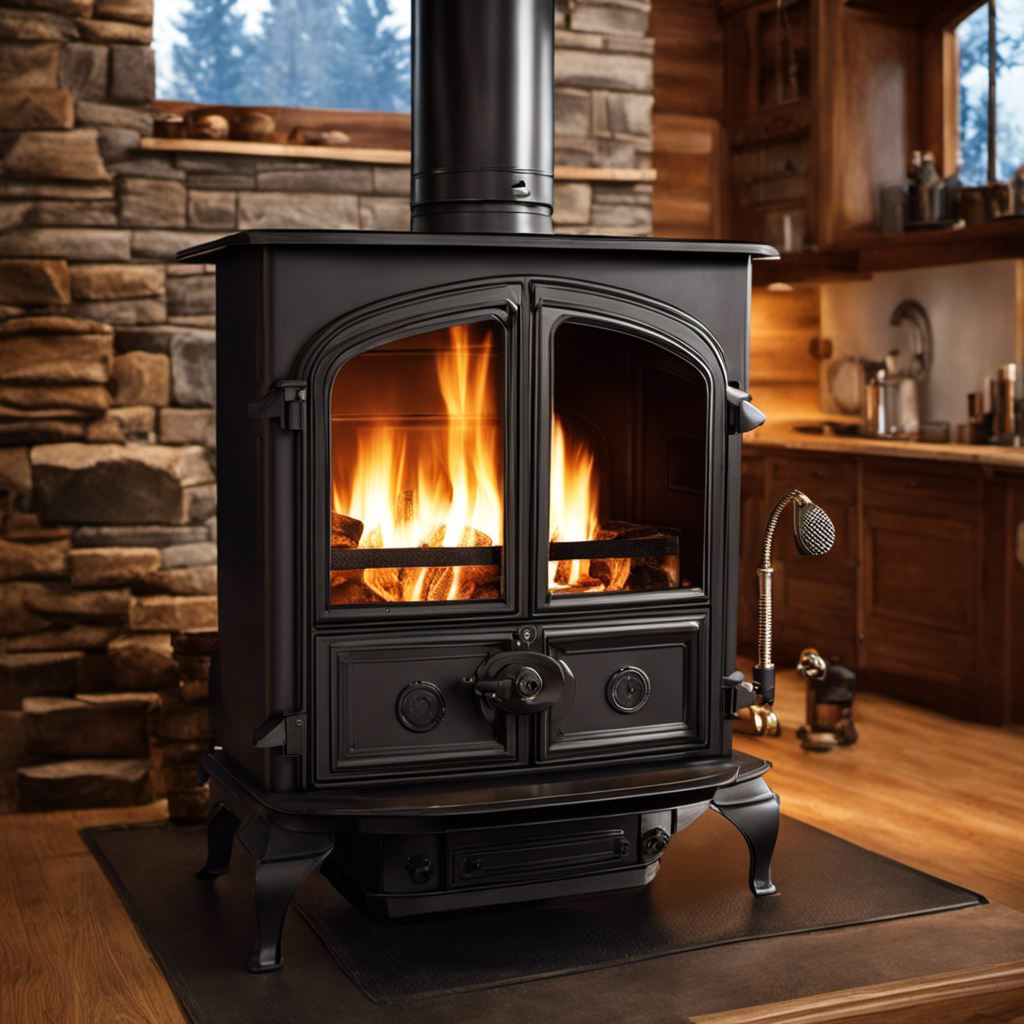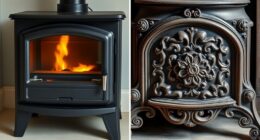After personally experiencing the challenges of dealing with a smoky wood stove, I empathize with the frustration it causes.
Did you know that according to the EPA, smoke from wood stoves can contribute to air pollution both inside and outside your home?
But fear not, because in this article, I will share my knowledge and experience on how to correct a smokey wood stove.
From understanding the causes to troubleshooting persistent issues, you’ll learn the steps to ensure optimal burning and a smoke-free home.
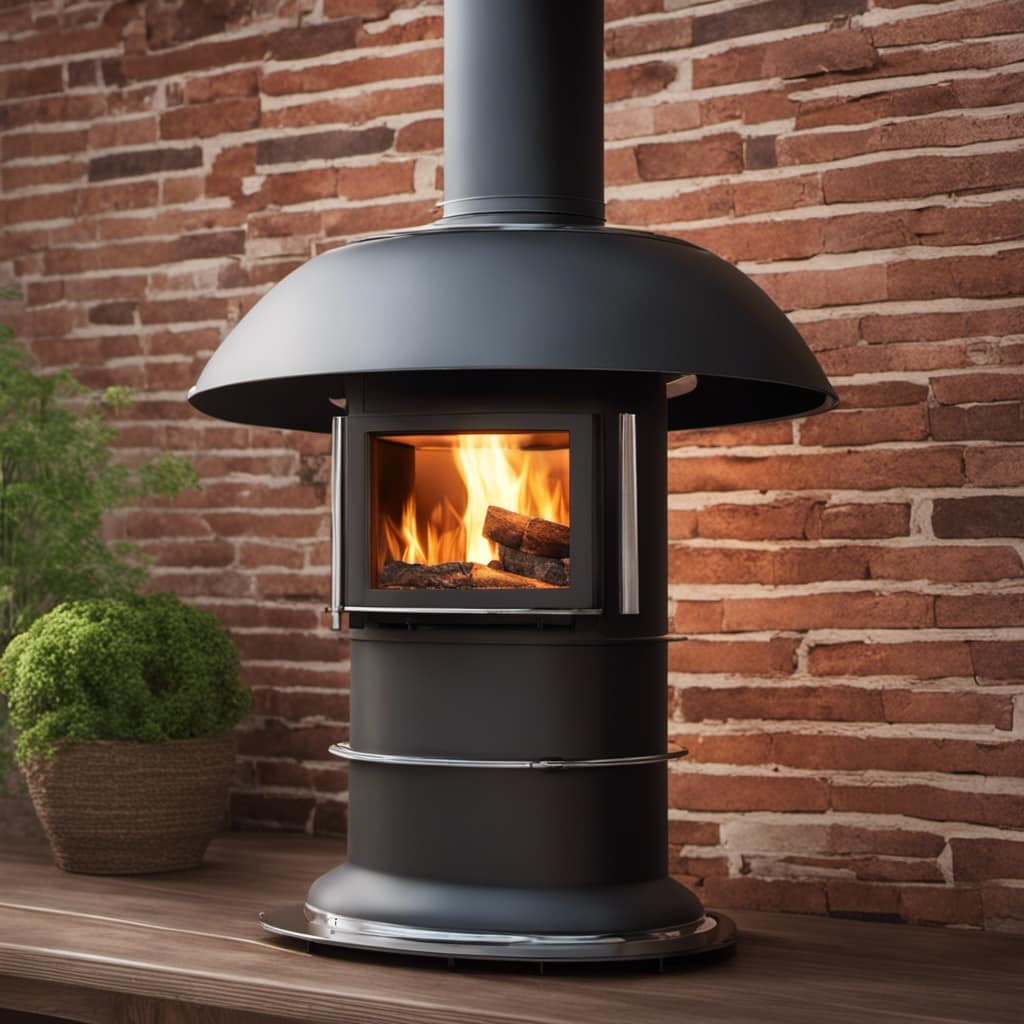
Key Takeaways
- Excessive smoke in a wood stove indicates a problem with stove performance and should not be considered normal or unavoidable.
- Proper airflow is crucial in minimizing smoke, and damp wood is not the sole cause of smoke.
- Seasoned firewood produces less smoke, so opting for it can help reduce smoke production.
- To address persistent smoke issues, check for obstructions in the chimney or flue, clear out debris or creosote buildup, ensure the damper is fully open, and inspect for cracks or damage in the chimney.
Understanding the Causes of Smoke in Your Wood Stove
I’m learning about the causes of smoke in my wood stove and how to correct it.
Many people have common misconceptions when it comes to smoke in their wood stoves. One common misconception is that smoke is normal and unavoidable. However, excessive smoke can indicate a problem with your stove’s performance.
Another misconception is that only wet or green wood causes smoke. While damp wood can contribute to smoke, there are other factors to consider.
Troubleshooting tips for smoke in your wood stove include ensuring proper airflow, using seasoned firewood, and cleaning the chimney regularly. Adequate airflow is crucial for efficient burning and minimizing smoke.
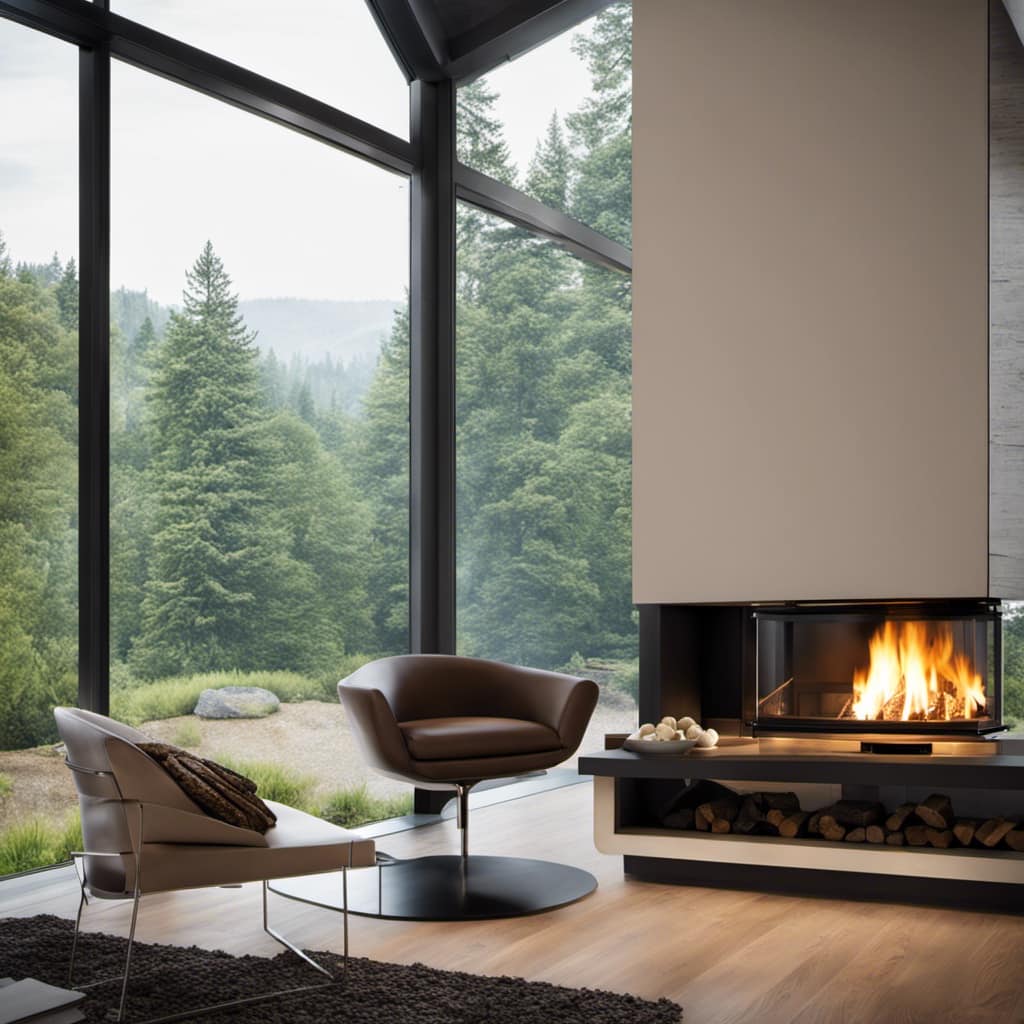
Seasoned firewood, which has been dried for at least six months, will produce less smoke. Regular chimney cleaning helps prevent blockages that can lead to excessive smoke.
Assessing and Cleaning the Chimney and Flue
Before proceeding with any repairs, I should assess and clean the chimney and flue to ensure proper ventilation. As a seasoned professional, I understand the importance of this step in correcting smoke issues with a wood stove.
First, I’ll assess the chimney height to determine if it meets the necessary requirements for efficient draft. A chimney that’s too short can lead to poor airflow and smoke entering the room.
Next, I’ll carefully inspect the flue for any blockages, such as debris or bird nests, which can hinder the proper exit of smoke. Removing any obstructions will allow for better ventilation and reduce the likelihood of smoke entering the living space.
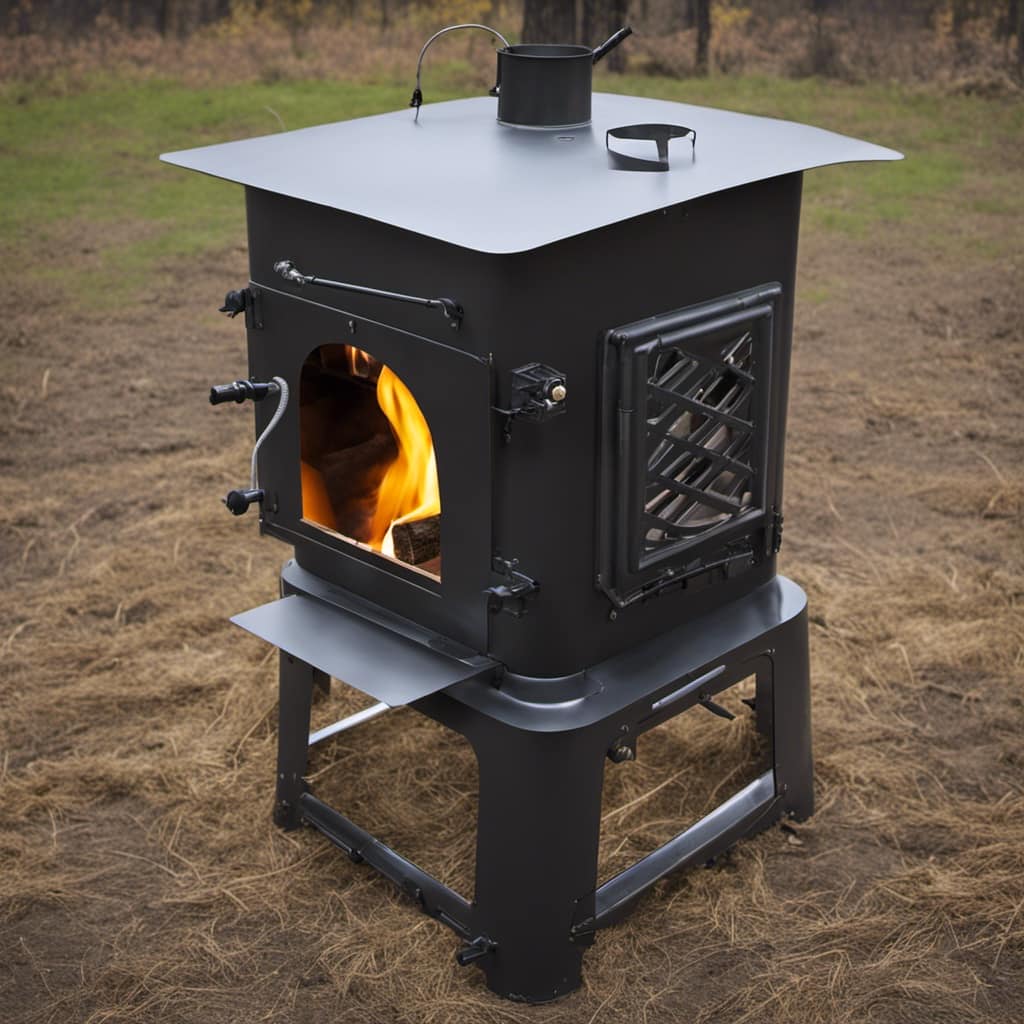
Adjusting the Airflow and Damper Settings for Optimal Burning
To optimize burning, I need to make adjustments to the airflow and damper settings. Proper temperature control is crucial for efficient and clean burning in a wood stove. By regulating the amount of air entering the stove through the airflow control and adjusting the damper settings, I can achieve the desired temperature and reduce smoke production. Here is a helpful table to guide you in making these adjustments:
| Airflow Control | Damper Setting | Result |
|---|---|---|
| Open | Fully Open | High |
| Partially Open | Partially Open | Medium |
| Closed | Closed | Low |
Choosing the Right Wood and Properly Stacking and Igniting the Fire
I can achieve optimal burning conditions by selecting the right type of firewood and stacking it properly before igniting the fire. When it comes to choosing fuel for my wood stove, I always opt for seasoned hardwood. This type of wood burns more efficiently and produces less smoke compared to softwoods or unseasoned wood. By using seasoned hardwood, I can prevent creosote buildup in my chimney, which is essential for maintaining a safe and efficient wood stove.
Additionally, I make sure to stack the firewood properly, allowing for adequate airflow and ensuring a more complete combustion. This not only helps in reducing smoke but also improves the overall efficiency of the fire.
Now, let’s move on to troubleshooting and addressing persistent smoke issues.

Troubleshooting and Addressing Persistent Smoke Issues
When troubleshooting persistent smoke issues, it’s important to check for any obstructions in the chimney or flue. Sometimes, a simple fix can solve the problem and prevent further frustration. Here are a few common mistakes to avoid and steps to take before seeking professional help:
- Clear out any debris or creosote buildup from the chimney or flue.
- Ensure that the damper is fully open to allow for proper airflow.
- Check for any cracks or damage in the chimney that may be causing smoke to escape.
- Make sure the stovepipe is properly connected and in good condition.
- Consider the type and quality of wood you’re using, as it can affect the amount of smoke produced.
If these troubleshooting steps don’t resolve the issue, it may be time to consult a professional chimney sweep or stove technician. They can provide expert guidance and ensure your wood stove is operating safely and efficiently.
Frequently Asked Questions
How Often Should I Clean My Wood Stove Chimney and Flue?
I clean my wood stove chimney and flue at least once a year to ensure proper airflow and prevent smoke buildup. Regular inspections are important for maintaining the right damper settings and avoiding smoky stove issues.
What Are the Signs That Indicate a Problem With the Airflow and Damper Settings?
When troubleshooting smoke problems, it’s essential to check the airflow and damper control. Signs of airflow issues include smoke coming out of the stove or chimney, difficulty starting a fire, or poor burning efficiency.

Can I Use Softwood in My Wood Stove?
Yes, you can use softwood in your wood stove. Softwood burns faster and produces more heat, making it ideal for quickly warming up your space. However, it also creates more creosote, so regular chimney cleaning is important.
How Long Does It Typically Take for a Fire to Start Burning Properly After Ignition?
Typically, it takes about 10-15 minutes for a fire to start burning properly after ignition. If you’re experiencing smoke issues, it could be due to improper airflow or damp wood. Troubleshooting these issues is crucial for a smoke-free wood stove.
What Should I Do if I Have Followed All the Troubleshooting Steps and Still Have Persistent Smoke Issues?
If I’ve followed all the troubleshooting steps and still have persistent smoke issues, what should I do? First, check for common causes like a dirty chimney or insufficient air supply. Then, try adjusting the damper or seeking professional help if needed.
Conclusion
In conclusion, addressing smoke issues in a wood stove requires a thorough understanding of its causes and implementing the right solutions.
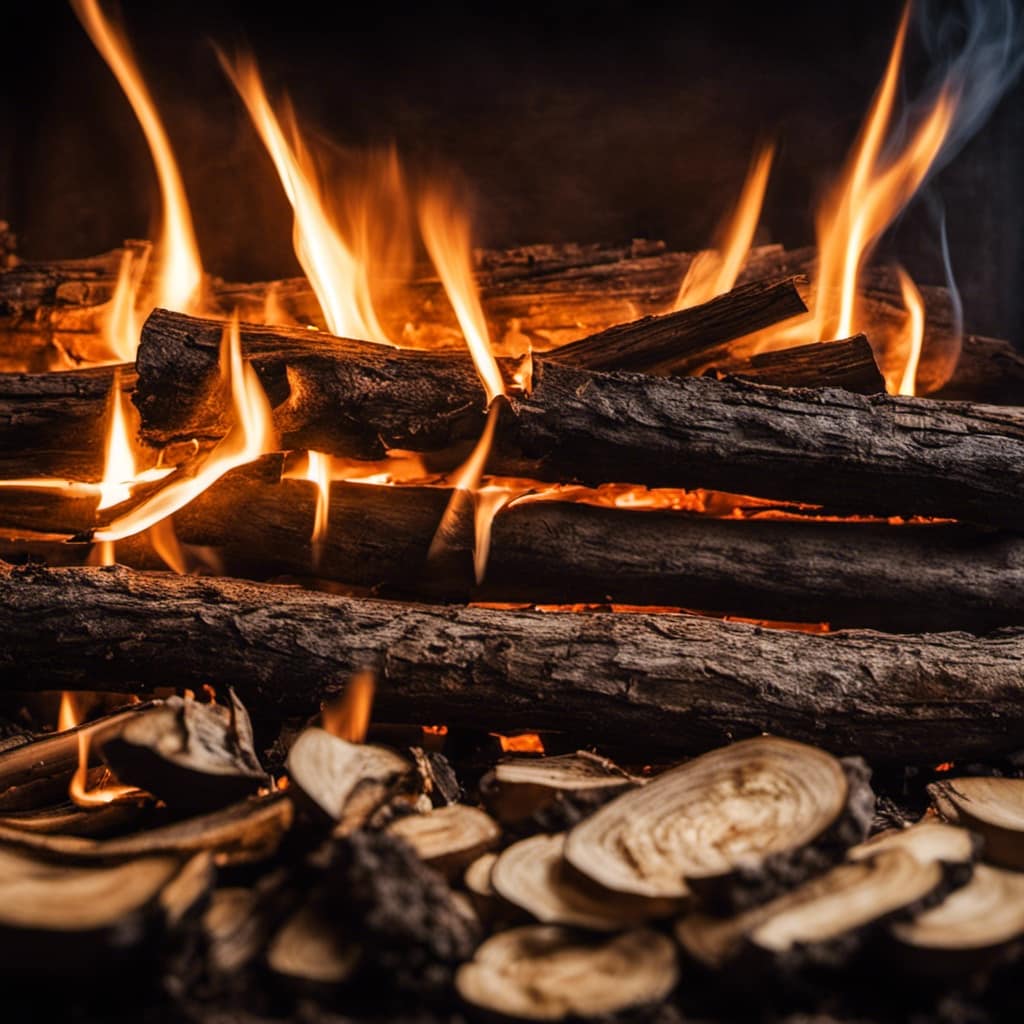
Just like a skilled conductor orchestrating a symphony, adjusting the airflow and damper settings is essential for optimal burning.
Choosing the right wood and properly stacking and igniting the fire is like laying the foundation for a harmonious melody.
By following these steps and troubleshooting persistently, you can transform your smokey wood stove into a roaring, efficient source of warmth and comfort.
Growing up surrounded by the vast beauty of nature, Sierra was always drawn to the call of the wild. While others sought the comfort of the familiar, she ventured out, embracing the unpredictable and finding stories in the heartbeat of nature.
At the epicenter of every remarkable venture lies a dynamic team—a fusion of diverse talents, visions, and passions. The essence of Best Small Wood Stoves is crafted and refined by such a trio: Sierra, Logan, and Terra. Their collective expertise has transformed the platform into a leading authority on small wood stoves, radiating warmth and knowledge in equal measure.





